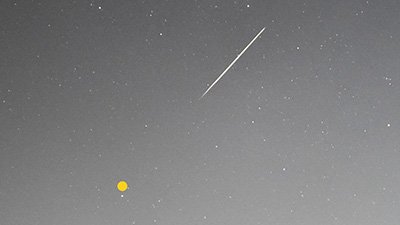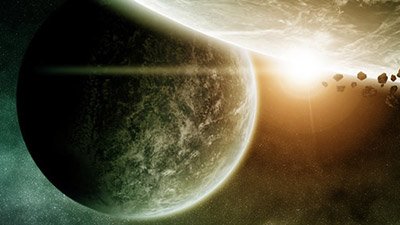
This Just in: There Is Water on the Moon
On Monday, October 26, 2020, NASA announced that its Stratospheric Observatory for Infrared Astronomy (SOFIA) had detected water on the sunlit surface of the moon for the first time. For a long time, the lunar surface was thought to be completely devoid of water. But over the past two decades, scientists have been warming up to the idea of the possibility of water on the moon. During that time, there have been many possible detections of lunar water. For instance, one of the studies provided evidence of ice in some perpetually dark areas on crater floors in the moon’s poles. This was significant, because without sunshine, these regions could support water ice indefinitely. The problem with most of these studies is that they detected hydrogen. It isn’t clear if this hydrogen in the form of water (H2O) or in the hydroxyl radical OH bonded to other things.
SOFIA is a modified Boeing 747 that contains a 2.5-meter telescope with an array of infrared instruments. SOFIA typically flies at 45,000 feet altitude to get above most of the moisture in the earth’s atmosphere that normally interferes with infrared observations.
SOFIA is a modified Boeing 747 that contains a 2.5-meter telescope with an array of infrared instruments. SOFIA typically flies at 45,000 feet altitude to get above most of the moisture in the earth’s atmosphere that normally interferes with infrared observations. On its first attempt to measure the 6.1-micron wavelength emission of water molecules, SOFIA was able to directly detect water in the floor of Clavius, one of the largest craters on the moon. This is a significant announcement because this part of the moon receives abundant sunshine. Just how much water is on the surface in Clavius? The concentration of water is between 100 and 412 parts per million. By comparison, the Sahara contains about 100 times more than this, so while the announcement of water discovered on the moon is significant, the amount of water discovered is not.
Still, this water raises questions of how the water got there and how it manages to stay there, given the often-high temperatures present, and, more importantly, virtually zero gas pressure. There are several possible explanations. One possibility is that micrometeorites raining down may deliver enough water that can survive the impact and become part of the lunar soil. This is particularly true of micrometeoroids from comets, since comets have large concentrations of water. Another possibility is that protons in the solar wind might interact with lunar minerals containing oxygen to produce hydroxyl that further interacts to form water. It’s not clear at what rate water is leaving the lunar surface.
Does this discovery of water in the sunlit part of the moon have any bearing on the issue of creation/evolution? It is too early to tell.
Does this discovery of water in the sunlit part of the moon have any bearing on the issue of creation/evolution? It is too early to tell. Part of this may hinge on how long the water can remain where it is. Is the water slowing leaving at a faster rate than it is forming, or is it in a steady state of accumulation and removal? If the former, the existence of water in a sunlit place on the moon could have significance with regards to the moon’s age. Keep in mind that not very long ago, few scientists thought that water on the moon was possible. Part of their reasoning was that if there ever was any water on the moon, it would have evaporated a long time ago. We are sure to hear more about water on the moon, so stay tuned.
Recommended Resources

Answers in Genesis is an apologetics ministry, dedicated to helping Christians defend their faith and proclaim the good news of Jesus Christ.
- Customer Service 800.778.3390
- © 2024 Answers in Genesis







